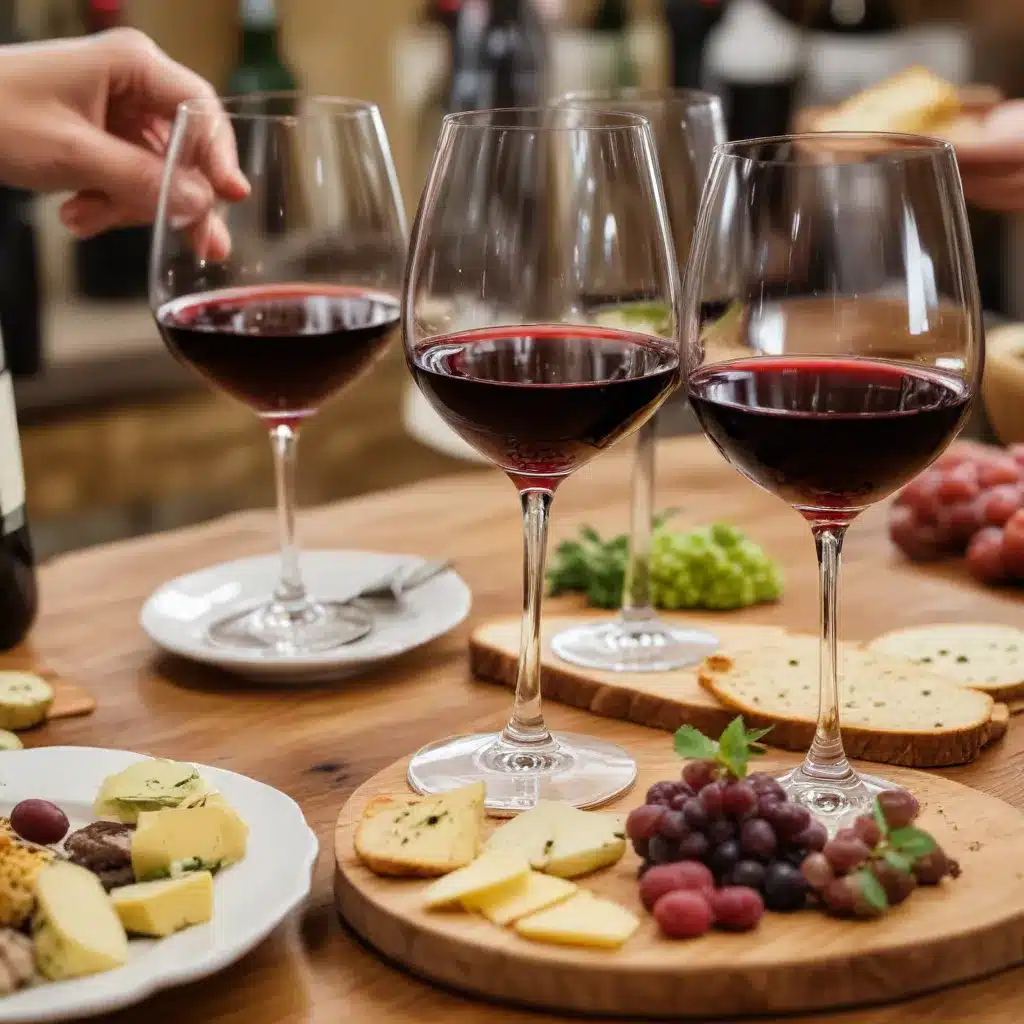
Unlocking Flavor Harmonies: The Art of Wine and Food Pairing
Elevating the Culinary Experience through Flavor Synergy
As a seasoned culinary expert with a deep passion for California cuisine, I’ve spent countless hours exploring the intricate dance between food and wine. The art of pairing these complementary elements is not merely a set of rigid rules, but a dynamic canvas upon which we can express our creativity and unlock the full potential of our taste buds.
In my journey through the world of fine dining, I’ve come to appreciate the profound impact that harmonious flavor combinations can have on the dining experience. Beyond the surface-level pleasures of a well-executed dish or a perfectly cellared vintage, there lies a realm of sensory transcendence – where the interplay of aromas, textures, and tastes can transport us to new culinary heights.
Unraveling the Science of Flavor
At the heart of this art lies an understanding of the complex web of chemical compounds that give foods and wines their distinctive flavors. Drawing on the groundbreaking research of pioneers like François Chartier, I’ve learned to approach the pairing process through a scientific lens, while never losing sight of the essential role that intuition and personal experience play.
Chartier’s work has shed light on the aromatic molecules that bind various ingredients together, revealing the hidden connections that can transform a seemingly incongruous pairing into a symphony of flavors. By mapping these molecular affinities, he has empowered chefs and sommeliers to venture beyond conventional pairings, unlocking new realms of culinary discovery.
Embracing the Global Tapestry of Food Traditions
Yet, as alluring as these scientific principles may be, I’ve found that truly mastering the art of wine and food pairing requires a deeper understanding of the cultural and historical contexts that have shaped the culinary traditions of the world. From the terroir-driven pairings of French cuisine to the spice-infused harmonies of Indian dishes, each region has its own unique flavor lexicon that reflects the rhythms of its environment and the wisdom of its people.
By exploring these time-honored pairings, we gain a newfound appreciation for the ingenuity and foresight of our culinary ancestors. Their pairings, honed through generations of trial and error, offer a glimpse into the inherent logic of flavor compatibility – a logic that transcends the bounds of individual palates and cultural biases.
Pushing Boundaries with Contemporary Techniques
While respecting the foundations laid by traditional cuisines, I’ve also found immense joy in embracing the contemporary approaches to wine and food pairing that have emerged in recent years. Techniques like molecular gastronomy’s “flavor pairing” and the cross-cultural exploration of fusion cuisine have opened up a world of exciting possibilities, challenging us to rethink our assumptions and push the boundaries of what’s possible.
In the realm of molecular gastronomy, the concept of “flavor pairing” has been a game-changer. By identifying ingredients that share common volatile compounds, chefs and sommeliers can create unexpected yet harmonious combinations that defy conventional wisdom. The pairing of white chocolate and caviar, or strawberries and balsamic vinegar, are just a few examples of how this innovative approach can transform our understanding of flavors and their potential for synergy.
Fusion cuisine, on the other hand, offers a window into the rich tapestry of culinary traditions, blending elements from diverse cultures to create entirely new and captivating flavor profiles. From the spice-infused tacos of Tex-Mex to the umami-driven delights of Asian-inspired dishes, these cross-pollinations invite us to expand our palates and embrace the infinite possibilities that arise when culinary boundaries are crossed.
Cultivating a Palate for Pairing at Home
As exciting as these professional-level techniques may be, I firmly believe that the art of wine and food pairing is not the exclusive domain of chefs and sommeliers. In fact, one of the greatest joys I’ve experienced is empowering home cooks and enthusiasts to unlock the secrets of harmonious pairings in their own kitchens.
The key, I’ve found, lies in cultivating a deep understanding of flavor dynamics and a willingness to experiment. By familiarizing ourselves with the principles of balance, texture, and temperature, we can begin to intuitively recognize the synergies that bring a dish and its accompanying wine to life.
Start by exploring the traditional pairings of your favorite cuisines, and then venture forth with a spirit of curiosity and an open mind. Dare to challenge the conventions – pair that bold Cabernet with a delicate seafood dish, or experiment with the interplay of sweet and salty flavors. Trust your taste buds, and don’t be afraid to discover new favorites that defy the expected.
Elevating the Dining Experience through Culinary Creativity
Ultimately, the art of wine and food pairing is not about adherence to rigid rules, but rather a celebration of the infinite possibilities that arise when we embrace the dynamic nature of flavor. By harnessing the insights of science, the wisdom of tradition, and the boundless creativity of contemporary techniques, we can elevate the dining experience to new heights, transforming the simple act of eating and drinking into a sensory odyssey that nourishes both the body and the soul.
As a culinary expert, I’ve had the privilege of guiding countless diners through these flavor explorations, witnessing the delight and wonder that arise when the perfect pairing is discovered. It is in these moments that I find my greatest fulfillment – when the interplay of food and wine transcends the merely delicious and becomes a truly transformative experience.
So, let us embark on this journey together, uncovering the hidden harmonies that lie waiting to be discovered. Whether you’re a seasoned oenophile or a passionate home cook, the world of wine and food pairing holds endless opportunities for exploration, creativity, and, most importantly, the sheer joy of savoring the flavors that make our culinary landscape so richly diverse and endlessly captivating.

